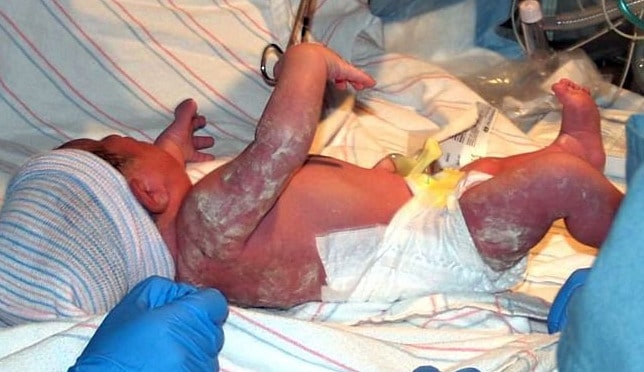Prolonged pregnancy (also known as post-term) is used to refer to the 5-10% of pregnancies which persist up to and beyond 42 weeks gestation.
Although the terms post-dates and post-term are used interchangeably, they have slightly different meaning:
- Post-term pregnancy refers to a pregnancy extending past 42 weeks gestation (term refers to the 37-42 week gestation period)
- Post-dates pregnancy refers to a pregnancy extending past the estimated delivery date (EDD), also known as due date at 40 weeks gestation.
In this article, we shall look at the risk factors, management and complications of a prolonged pregnancy.
Aetiology and Risk Factors
It is unclear what causes certain pregnancies to last for longer than average, but some risk factors have been identified:
- Nulliparity
- Maternal age >40
- Previous prolonged pregnancy
- High body mass index (BMI)
- Family history of prolonged pregnancies
Complications
The primary concern with any prolonged pregnancy is the increased risk of stillbirth. The rate of stillbirth exponentially rises after 37/40 gestation:
- 37/40 – 1 in 1000
- 42/40 – 3 in 1000
- 43/40 – 6 in 1000
Due to the increased potential for placental insufficiency, there is also a higher risk of fetal acidaemia and meconium aspiration in labour, and the need for instrumental or caesarean delivery.
The reduced oxygen and nutrient transfer due to placental degradation can deplete fetal glycogen stores, resulting in neonatal hypoglycaemia.
Clinical Features
Prolonged pregnancy is a diagnosis based on the gestational age of the fetus, which is calculated by the first trimester ultrasound dating scan. Thus, some prolonged pregnancies can have no clinical features at all.
However, the most common clinical features of a prolonged pregnancy include:
- Static growth or potentially macrosomia
- Oligohydramnios
- Reduced fetal movements
- Presence of meconium
- Signs of meconium staining e.g. on nails
- Dry / flaky skin with reduced vernix
- Vernix is a waxy, white substance found coating the skin of newborn babies.
Differential Diagnosis
In all cases of prolonged pregnancy, consider inaccurate dating as a alternative ‘diagnosis’.
The introduction of a dating scan between 11+0 and 13+6 weeks gestation has reduced the number of inaccurately dated pregnancies using last menstrual period. However, poorly compliant patients may still present with prolonged pregnancy due to errors in dating.
Investigations
Dating is recommended between 11+0 and 13+6 weeks gestation during the first trimester scan. This is most reliable as the fetus rarely shows signs of being constitutionally large or small until a later stage of gestation.
Ultrasound scanning to check growth, liquor volume and dopplers are frequently performed in women with prolonged pregnancy. However, evidence suggests that ultrasound has poor prognostic value in determining placental function and predicting fetal distress.
Management
In the UK, NICE/RCOG guidelines recommend delivery by 42 weeks gestation to reduce the risk of stillbirth in prolonged pregnancy. This can be achieved by:
- Membrane sweeps – can be offered from 40+0 weeks in nulliparous and 41+0 weeks in parous women.
- Induction of labour – usually offered between 41+0 and 42+0 weeks gestation.
- See here for more information.
Women who decline induction of labour should be offered twice weekly CTG monitoring and USS with amniotic fluid measurement in an attempt to identify fetal distress. In the event of fetal distress, or other serious complication to mother or child, it may be necessary to conduct an emergency caesarean section.
Summary
- At term there is an exponential rise in the number of stillbirths.
- Induction of labour is recommended at 42/40 to reduce this risk.
- First trimester USS dating has helped to reduce errors in calculating due dates and allows clinicians and patients to plan for delivery if it does not occur spontaneously before 42 weeks.
- If induction/section is not chosen then increased surveillance is recommended.

